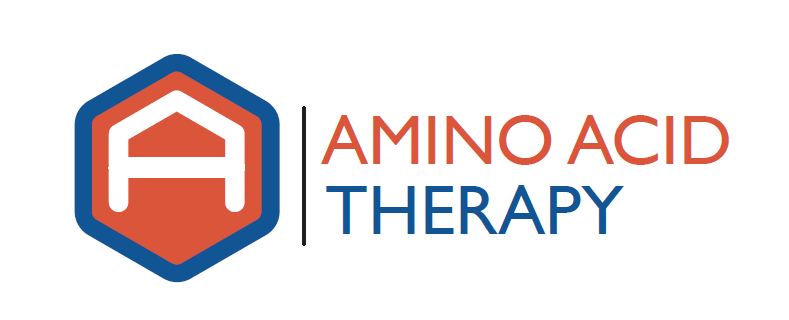 Every so often we encounter a case where we have seemingly found a person’s optimized dose of amino acids – meaning that whatever symptoms they were experiencing (i.e., depression, anxiety, urges to pull, migraines, tremor, inability to sleep, etc.) have been significantly reduced and/or eliminated – when ‘out of the blue’ their original symptoms return. This can present itself at anytime, but is most typical after a few weeks or months (3-4 months is most common) on the amino acids at the optimized dose. Before the client or provider begins to change anything (or panic) there are a couple of things that MUST be done to insure accurate and optimal results.
Every so often we encounter a case where we have seemingly found a person’s optimized dose of amino acids – meaning that whatever symptoms they were experiencing (i.e., depression, anxiety, urges to pull, migraines, tremor, inability to sleep, etc.) have been significantly reduced and/or eliminated – when ‘out of the blue’ their original symptoms return. This can present itself at anytime, but is most typical after a few weeks or months (3-4 months is most common) on the amino acids at the optimized dose. Before the client or provider begins to change anything (or panic) there are a couple of things that MUST be done to insure accurate and optimal results.
Journal
The vast majority of the time, the person has missed or altered one or more doses of the amino acids. So, the first thing to do (before attempting to alter their current dosing) is to have the person journal EVERY dose of amino acids they take for the next 7 days. This means every pill of every product for at least 7 days, including the time the pills were taken. If this is done faithfully and all the pills are taken as directed, the vast majority of people will achieve relief of symptoms again within 5-7 days.
We have seen some pretty dramatic cases where this has occurred. There was one person that mixed up which pills they took at various times, but took the correct amount of each product each day – for example, they took 4 Cysreplete rather than 2 CysReplete and 2 NeuroReplete at breakfast, then 2 NeuroReplete and 2 CysReplete at lunch followed by 6 NeuroReplete and no Cysreplete at dinner when they were supposed to take 4 NeuroReplete at breakfast and dinner and 2 CysReplete 3x/day. The total daily amount of each product was the same, but how they were taken throughout the day was dramatically different than recommended – and it matters. We are looking for balance and stability throughout the day. Just like you can’t drink 32 ounces of water immediately upon waking and another 32 ounces of water just before bed and expect to be hydrated (contrasted with drinking 4 ounces of water every 30 minutes throughout the day for a total of 64 ounces), you can’t take the amino acids in an imbalanced fashion and expect stable results.
Far more common is the case of mistaken identity, where one product is taken as another and the person doesn’t even know they are taking the wrong product; after all, the capsules from each of the products are very hard to tell apart and it is very easy to mistake one for another. Careful journaling of every pill of every product will solve this problem.
And then there is the person that just can’t seem to get or stay on track – they are going along fine and suddenly experience a relapse of symptoms. This is a very common occurrence after missing even a single dose of amino acids, especially in the early stages of amino acid therapy, as some people rationalize – ‘it’s only one dose – that shouldn’t matter” – but it does. It normally takes between three and five days for symptoms to come back under control once the amino acids are again taken properly. If the person misses another dose within 3 days and then misses another dose in 4 days, it doesn’t take long until it appears that the amino acids haven’t been working for weeks. An accurate journal will solve this problem as well.
People can be very convincing in their attempts (and beliefs) that no pills have been missed. NO MATTER HOW CONVINCING THEY ARE, have them journal all the products taken, including the time taken, for at least 7 days before proceeding. Most often, this alone will restore optimized function and fix ‘the problem’.
Testing
There are cases where a person’s amino acid needs do change, sometimes quite dramatically, over time. Normally, this occurs due to a major stressful event, head trauma or medication change, but it can be due to any one or more of the common causes of neurotransmitter imbalance. It can also be due to the replenishment of neurotransmitter stores over time, which may necessitate them taking less amino acids.
If people have recorded every dose of every product they have taken for at least 7 days (including the time taken) and symptoms have not resolved, it’s time to submit a urine sample for OCT analysis in order to determine their new amino acid dosing needs. Don’t guess – chances are you will be wrong and only make the underlying neurotransmitter imbalance worse. Your clients will be tempted to alter their amino acid dosing to try and get their symptoms back under control; encourage them (strongly) not to do so and have them first journal and second complete a DBS test to guide your recommendations – it’s by far the fastest way to get them back on track.
Pill Stop
If they are on a dopamine dominant protocol and they have journaled every pill of every product for at least 7 days without a resolution of symptoms, do a pill stop after submitting the DBS testing. Combined, the results from the pill stop along with the DBS test results will provide the guidance you need to get them headed back in the right direction.
Amino acid therapy works because it helps to restore proper neurotransmitter function. However, this requires that the amino acids be taken in specified doses at set intervals throughout the day. Everybody’s amino acid needs are different; what works for some people – in regards to dosing and/or time of dosing – will not work for others, so comparison with other people is often of little use. Data, however, helps. First have them journal every dose of every every amino acid for at least 7 days; if that doesn’t restore optimal function and eliminate their symptoms, then submit a DBS test; if they are on a dopamine dominant protocol, then do a pill stop.
There is always a solution and the amino acids will never ‘quit working’ without a reason. We just need to find out what that reason is and address it.

